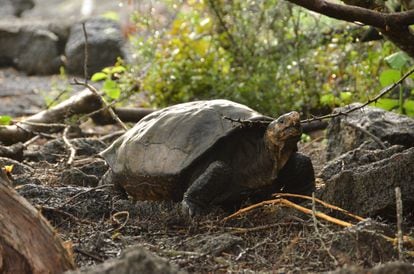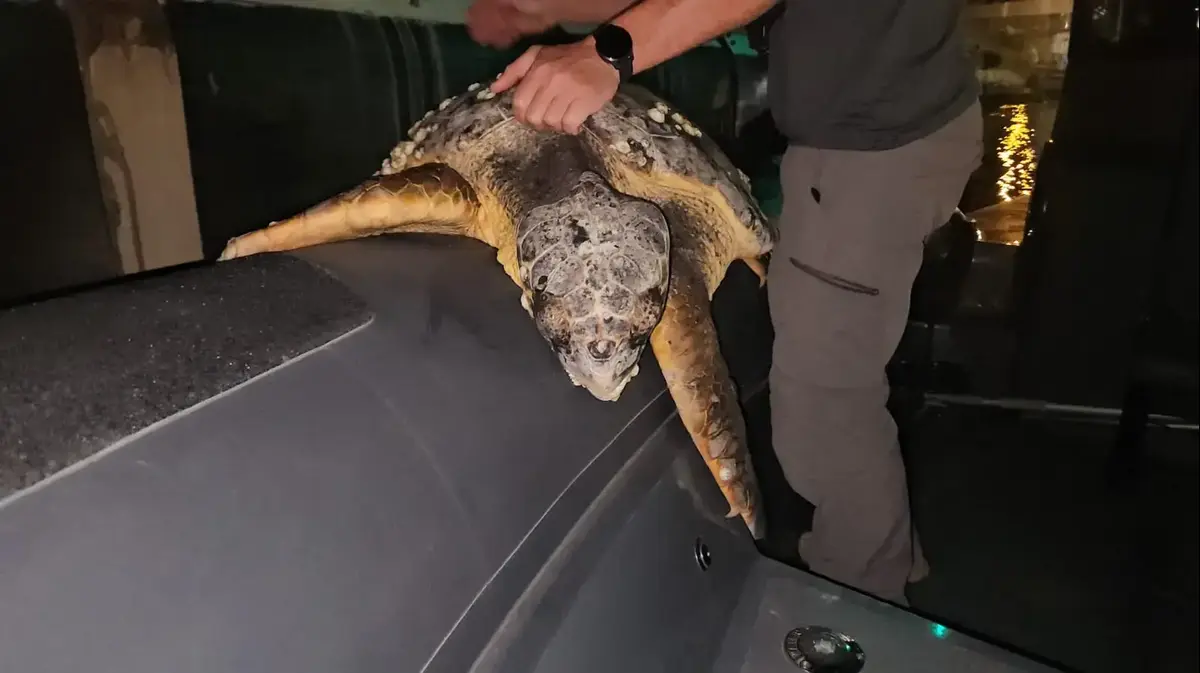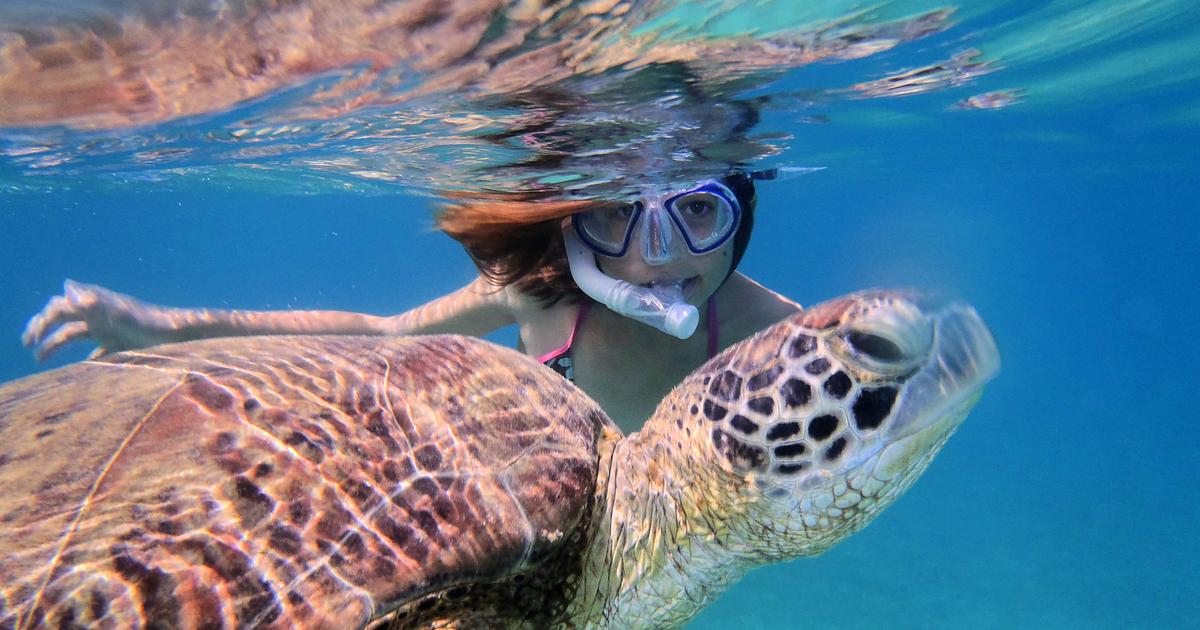The Fernanda tortoise, found in 2019 in an isolated area of Fernandina Island, in the Galapagos, Galapagos National Park
Fernanda has spent almost 100 years of life alone. It has been enclosed in a natural corral formed by lava on the Fernandina Island of the Galapagos, one of the most inhospitable and inaccessible due to constant volcanic activity. Since she couldn't get out of that isolated square kilometer, which is like an island of dry forest in the middle of a lunar landscape, she is a smaller than normal female turtle. For a giant tortoise, its shell measures 54 centimeters. "It is very likely that he had a lack of access to food and water during all those years," says Danny Rueda, director of the Galapagos National Park. Not only has she lived as a castaway until 2019, when she was found by an expedition, but she is also shipwrecked with respect to her species. It is the only living specimen of Chelonoidis phantasticus,which denies that his family was completely extinct more than 100 years ago.
The last male was registered in 1906 by the California Academy of Sciences.
But today Fernanda is the proof that there could be more like her.
It is the hope of the Galapagos National Park to find other giant tortoises of its lineage with which to repopulate the only island in the archipelago that until now did not have its own variety.
"We need at least one more female and one more male, because if we only find one male, the offspring could then have genetic problems as they are a cross between siblings," says the director of the National Park.
More information
Galapagos Islands: the living museum of evolution
The centennial turtle that has sired 800 children
The leader of the expedition of seven scientists that found Fernanda, Washington Tapia, still remembers the improbability of that find. “We had been touring the western part of the island for four days. A helicopter drops you there in the morning and picks you up in the afternoon. The last day, almost by default, we went to that coral. It was the last patch of vegetation that we had to see, but to get there we had to cross like a five kilometer ring of dry lava ”. It was worth the effort, acknowledges Tapia. Fernanda was there. Camouflaged under some bushes, getting ready to sleep. "They passed her several times without seeing her," says Rueda, the director of the Park. "We decided that we had to take her to the island of Santa Cruz because if we left her there the chances of seeing her again were minimal," explains Tapia.
Once transferred to the Giant Tortoise Breeding Center and placed in quarantine, they extracted genetic samples that are those that today, according to Yale University, have confirmed the coincidence between Fernanda's genomes and those of the male that has been conserved in California since a century ago.
There are 14 official species of tortoises recognized in the archipelago that became Charles Darwin's natural laboratory to formulate his theory of evolution. One family per island. Less in Fernandina. In parallel, there was a giant male tortoise in the California Academy of Sciences preserved from 1905 that had not been able to be related to any of those 14 families until now. That he had no identified relatives. Until Fernanda appeared. In addition to showing that his species is still alive, he confirms that Fernandina Island also has a variety of turtles of its own. The Chelonoidis phantasticus is one of those with a saddle shell - others have a dome shape - and is part of the giant Galapagos tortoises that can reach 1.5 meters. “100 years ago there were no records like now.In the logs of the pirates or whalers, at least, there is no talk of trade or extraction of turtles from Fernandina as it did on other islands ”.
What has led scientists to think that there could be other Chelonoidis phantasticus still alive, apart from Fernanda, are the traces found. “A kind of bed that turtles make to sleep has been seen, although very old. In 1967, a cactus with what appears to be a turtle bite and, in 2014, apparently turtle feces, which are very easy to confuse with iguana feces, ”explains Tapia. And it turns out that these remains have been found in other areas, very far from the corral in which Fernanda was. "Taking into account that she could not go out, because turtles cannot climb," says Rueda, the director of the National Park, it is possible that there are other specimens that have been invisible until now to researchers who have explored Fernandina Island. "There will not be many, maybe three or, at most, five",Tapia acknowledges. Finding them in a 600-square-kilometer sea of dry lava, he says, is the only hope of recovering the population of that species.
For that, the Galapagos National Park and the NGO Galapagos Conservancy, which is dedicated to seeking funds for research, will return to Fernandina Island in October with a large contingent.
The objective is to travel this inhospitable terrain from end to end in search of Fernanda's relatives.
“It will be at least 12 days with 50 scientists on the ground and about 40 more people for logistics, a helicopter and an anchored ship that will act as a base and heliport.
That is about $ 500,000 to $ 600,000 for each mission. "
And, according to Tapia, it will take two or more mega-expeditions like that to comb the entire surface and find out if, definitely, Fernanda is alone in the world or if she can be the key piece in the resurgence of her species.
Subscribe here
to the
newsletter
of EL PAÍS América and receive all the informative keys of the current situation in the region.






